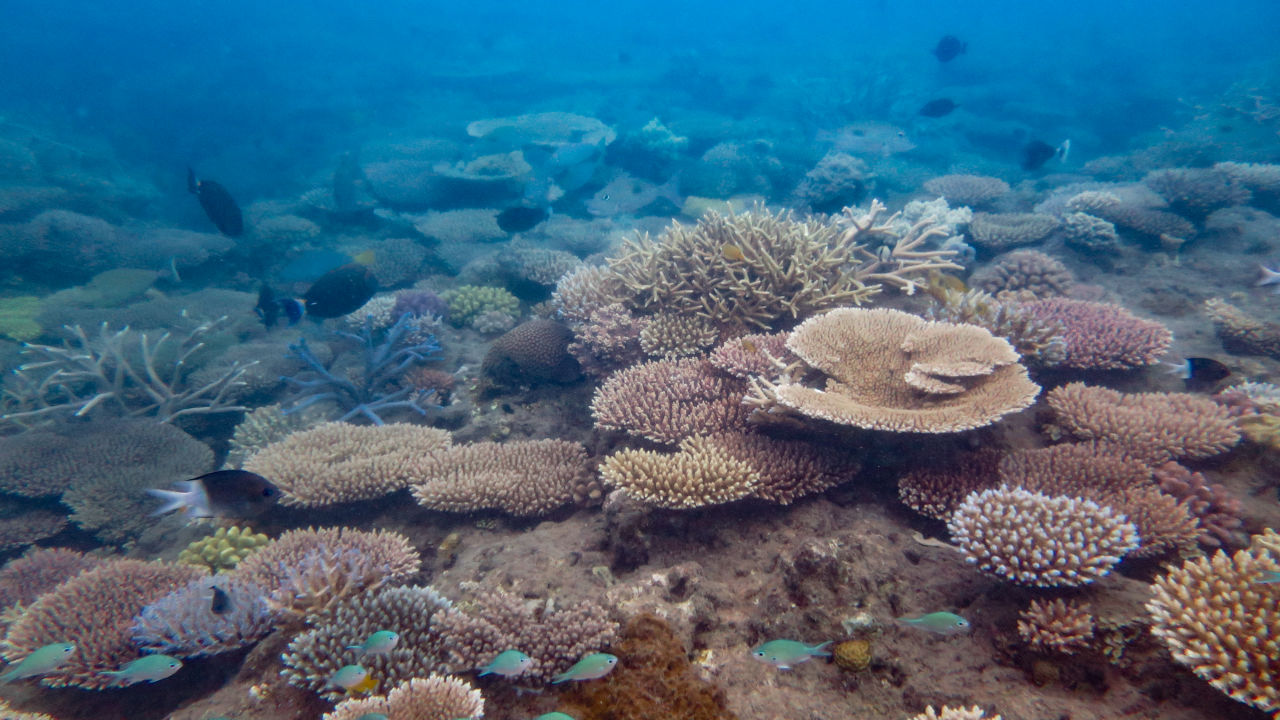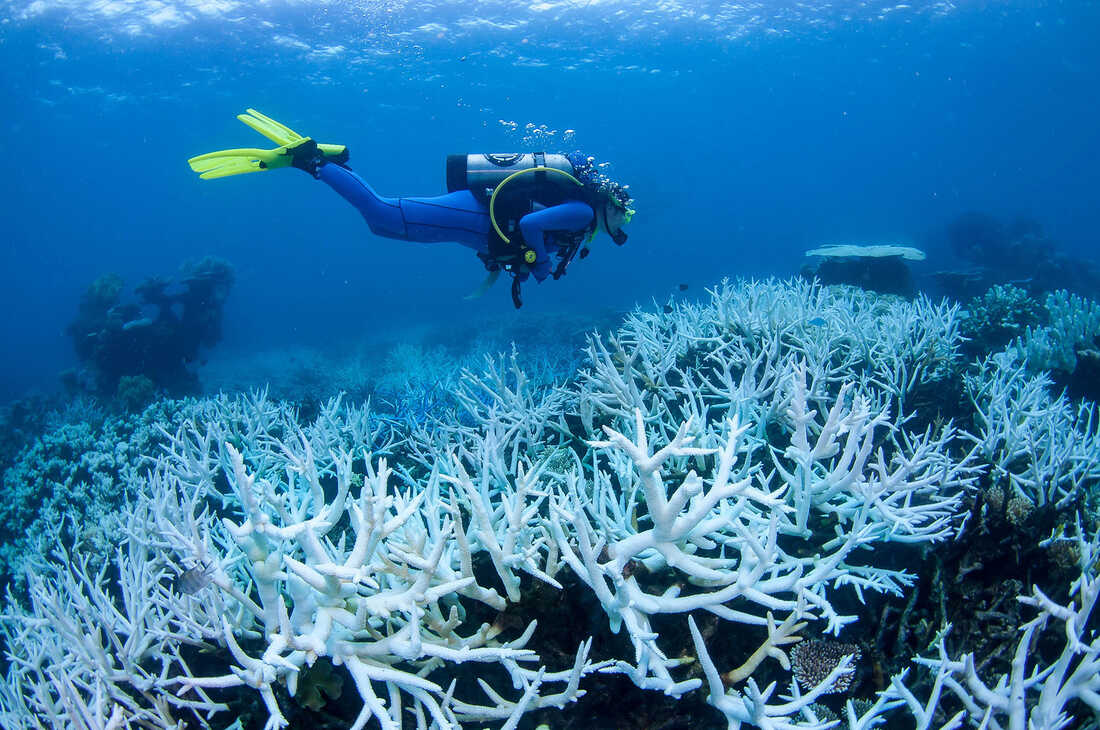Study Reveals Groundwater's Significance As A Pollution Source For The Great Barrier Reef
Study reveals groundwater's significance as a pollution source for the Great Barrier Reef, indicating that substantial pollution is infiltrating the reef via underground water pathways. This revelation holds potential implications for policymakers who are dedicated to reducing pollution in river catchment areas.
Author:Rhyley CarneyReviewer:Paula M. GrahamOct 10, 20233.7K Shares72.7K Views

Study reveals groundwater's significance as a pollution source for the Great Barrier Reef, indicating that substantial pollution is infiltrating the reef via underground water pathways. This revelation holds potential implications for policymakers who are dedicated to reducing pollution in river catchment areas.
According to this recent study, nearly one-third of the dissolved inorganic nitrogen and two-thirds of the dissolved inorganic phosphorus found in the waters of the Great Barrier Reef originate from subterranean sources. This substantial contribution had not been previously documented.
Addressing and controlling pollution runoff from agricultural lands into the reef has been a primary focus for governments and environmental agencies. Scientists emphasize that improving water quality is crucial in giving coral reefs a better chance to recover from the damaging effects of bleaching events linked to global warming.
United Nations scientific experts have consistently expressed concerns regarding the sluggish progress in enhancing water quality. They stress that failure to address this issue in conjunction with the climate crisis could potentially result in the Great Barrier Reef being added to the list of World Heritage sites in danger.
A collaborative effort involving scientists from Southern Cross University, the Australian Institute of Marine Science, and CSIRO has culminated in a decade-long research project. The findings of this extensive study have been published in the journal Environmental Science & Technology.
In this study, researchers collected water samples and conducted analyses using radium isotopes as indicators of pollution. It's important to note that the research did not pinpoint the pollution's source but rather traced the path it followed to reach the Great Barrier Reef.
Dr. Douglas Tait, a specialist in coastal water chemistry from Southern Cross University and the principal author of this research, has revealed that the pollutants may require decades to traverse from agricultural areas to underground aquifers. They eventually surface through springs along the coastline and underwater springs, also referred to as "wonky holes," within the Great Barrier Reef lagoon.
Dr. Tait suggests that this could potentially mark the beginning of a wave of pollution making its way through these systems, or it might signify the conclusion of a pollution event already in progress.
“„We could have a significant problem realized in the coming decades.- Dr. Douglas Tait
Prof Damien Maher, a co-author of the research also from Southern Cross University, said: “Groundwater discharge accounted for approximately one-third of new nitrogen and two-thirds of phosphorus inputs, indicating that nearly twice the amount of nitrogen enters the reef from groundwater compared to river waters.”
Tait emphasized that an overabundance of nutrients could lead to detrimental consequences, such as the proliferation of algal blooms, the emergence of coral-eating starfish outbreaks, and increased susceptibility to fish diseases.
This study, according to Tait, highlights the imperative need for a fundamental shift in management strategies to mitigate the adverse effects of pollutants.
Regarding the potential pathways for pollution through groundwater, Tait mentioned several possibilities, including its movement through fissures and cracks in subsurface rocks beneath the topsoil or its percolation through porous rock formations.
“„We’re going to need to have a discussion about how these nutrients are managed. We need a much better understanding of this process so that we can manage it in the future.- Dr. Douglas Tait
Both state and federal governments have committed substantial funding, totaling hundreds of millions of dollars, to enhance the water quality of the Great Barrier Reef.
Dr. Stephen Lewis, an expert in reef water quality affiliated with James Cook University's TropWATER research group, and not part of the research team, expressed surprise at the study's findings. He eagerly welcomed the opportunity to conduct a more in-depth examination of the results.
Prior to this study, there had been minimal research conducted on the role of groundwater as a pathway for nutrients to reach the Great Barrier Reef. The prevailing perception was that its contribution was insignificant. However, Dr. Tait emphasized that this issue represents a critical "knowledge gap" that requires thorough investigation and understanding.
“„This study suggests [the contribution from groundwater] could be much larger.- Dr. Stephen Lewis
Dr. Tait noted that the water sampling conducted covered various locations across the reef, and nutrients, whether they entered via rivers or groundwater, could be detected both directly and indirectly.
According to Dr. Lewis, while the study's findings do not alter the imperative to assist farmers in adopting more efficient fertilizer practices, they could enhance the precision of directing reef conservation funds in the future.
"We work with a lot of farmers and many of them are making great strides in nutrient management."
Federal Environment Minister Tanya Plibersek expressed her appreciation for this research, highlighting the importance of gaining a deeper understanding of the challenges facing the Great Barrier Reef. She emphasized that increased understanding enables more effective protection and restoration efforts.
Conclusion
Plibersek also announced that the government is actively investing $1.2 billion in initiatives to safeguard the reef. This investment includes over $232 million allocated to practical projects aimed at enhancing the quality of water entering the reef.
Jump to

Rhyley Carney
Author

Paula M. Graham
Reviewer
Latest Articles
Popular Articles
